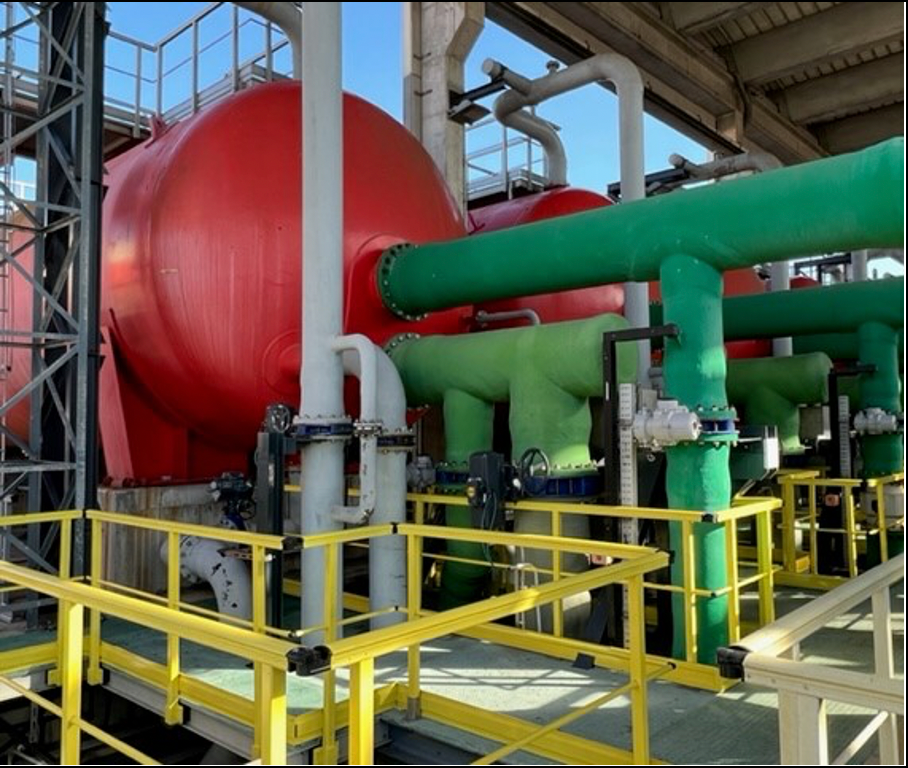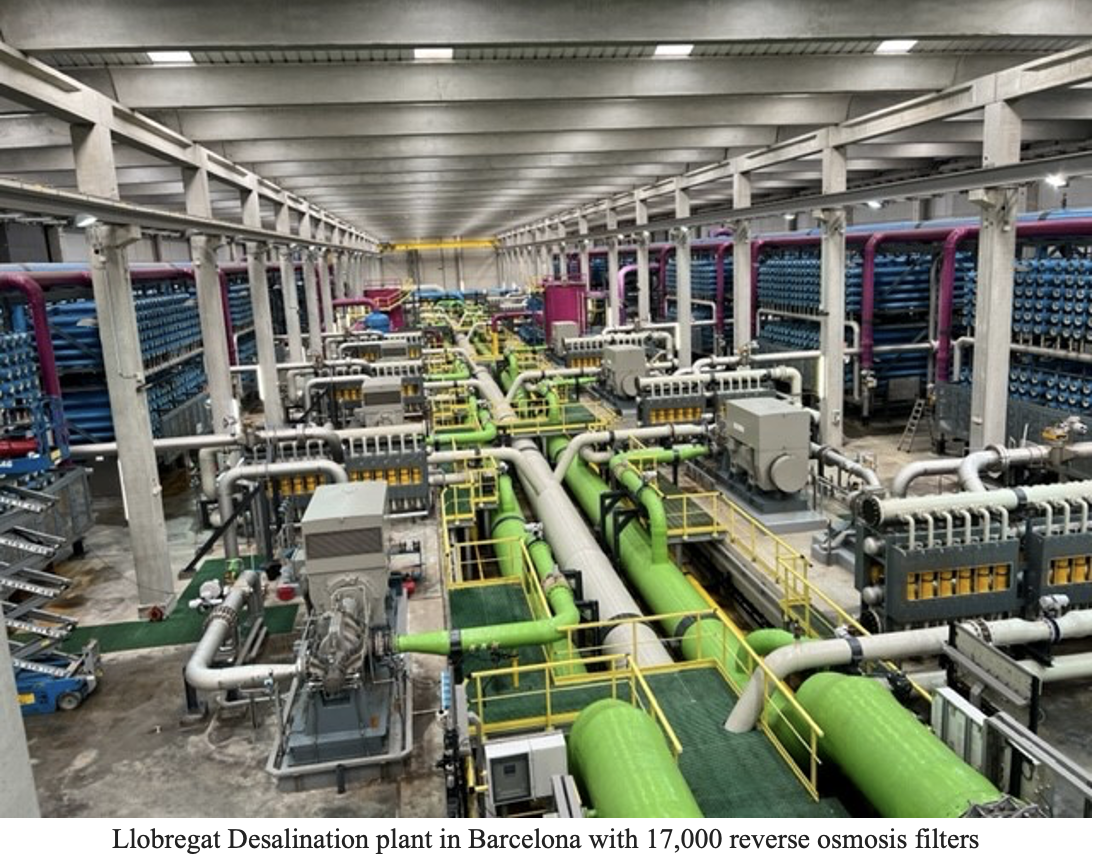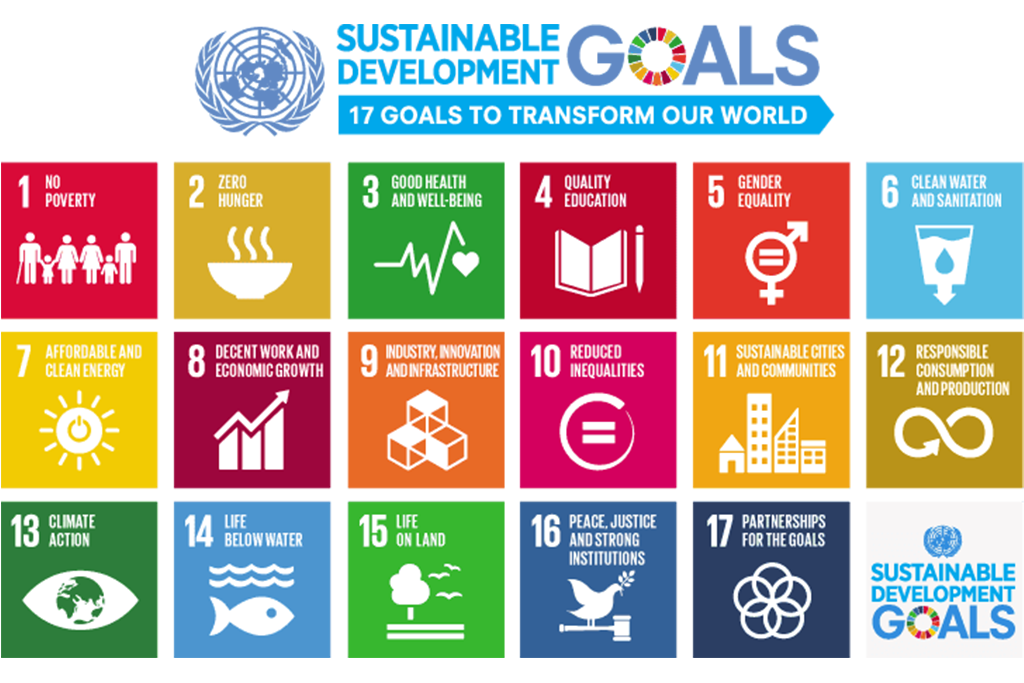My summer (2022) visit to Llobregat Desalination plant in Barcelona was pretty introspective – how far do we need to go before we realize that our governments have a balancing act to bring us citizens (aka voters) what we must absolutely have – the fundamental right to “low-cost” clean water!
Having worked at one of the most sophisticated water treatment plants in New York, I know first-hand that low-cost clean water is an oxymoron. Water is pretty much subsidized globally and everybody demands it. Then why are we so callous about a depleting resource.
My favorite poem, Samuel Taylor Coleridge’s (written in 1797-1798) The Rime of the Ancient Mariner warns us “Water, water, everywhere, nor any drop to drink.” Ironically, we do not realize that drinking water only constitutes 0.00775% of the Earth’s water.
Anyway back to the impressive Llobregat Desalination plant in Barcelona, which was built in 2008 as Barcelona government wanted to secure reliable water supply and reduce reliance on expensive imported fresh water. Llobregat is Europe’s largest seawater reverse osmosis desalination plant (for human consumption; Valencia is for irrigation) with a clean water output of 54 mgd (approximately 204,000 m3/day) operating at 90% capacity. The plant draws seawater from a pipe connection 3 km into the Mediterranean sea. Treated water from the Llobregat plant is then blended with water from two other surface water treatment plants, which then caters to the 1.6 million population of Barcelona. The plant uses 230 energy recovery devices (Home – Energy Recovery), which are estimated to reduce plant power consumption by 18 MW, saving 157+ GWh of energy per year, and avoiding 92,900 tons of CO2 emissions per year. It is managed by ATL, which works under the direct supervision of the Barcelona government. I would like to thank my host, Ms. Laia Hernandez, for providing an excellent thought provoking visit.
The Llobregat plant is differentiated in that: (1) it is energy efficient, (2) low-cost as brine is blended with output from a nearby sewage treatment plant before discharge back into the sea, (3) uses an additional step of pressurized anthracite and sand-filtration after conventional filtration to reduce the stress on the 17,000 reverse osmosis membranes (blue tubes in the cover picture and bottom right picture).




Llobregat’s energy consumption is 3.51 kWh/m3. Its levelized cost of water (LCOW) is EUR 0.70/m3, which is blended with the much lower LCOW from the two nearby surface treatment plants of EUR 0.20/m3 and EUR 0.05/m3 (think subsidies are real!) to arrive at a blended charge of EUR 0.70/m3 to Barcelona residents. My tests on Barcelona tap water yield an average TDS (total dissolved solids) level of 397 mg/l, which are below WHO limit of 500 mg/l but much higher than average U.S. municipal water TDS levels – please visit my blog post (Day Zero Water – Discovering Pathways to Clean Water) to see water TDS levels from a few of the interesting places that I have visited.
Now for some introspection:
- Local Governments need to provide clean water to residents and can no longer import expensive water and stay within approved budgets. The Spanish government is thinking of spending EUR 300 million in the next few years to set up more desalination plants in the southeast of Spain to relieve the water stress in the country. This is likely to become the norm in many more countries.
- Desalination is essential as we have limited water resources and cannot wake up to a COVID/terrorist type water contamination disaster. On the other hand, desalination is expensive as it entails significant capital costs (several hundred million in the case of Llobregat plant) and energy usage is significant (call for greater use of renewable energy!). For example, Barcelona is blending treated water from desalination with low-cost treated surface water to reduce the overall LCOW, but trying to not make a loss by passing the full cost to Barcelona residents at the higher of the treatment costs.
- If we want to truly reduce LCOW, we need to think about water reuse, and conservation.
- Barcelona tap water TDS at 397 is within WHO standards but several residents do not like the taste, and prefer to use bottled water instead (based on my interviews with several local residents).
- Water droughts due to lack of precipitation or extreme heat are only going to exacerbate water resource management. We may well be approaching a time when reused water is used for irrigation, tap water for hygiene and dishes/laundry, and bottled water for drinking. Ironically, we may have turned the tap full circle by not paying attention!









